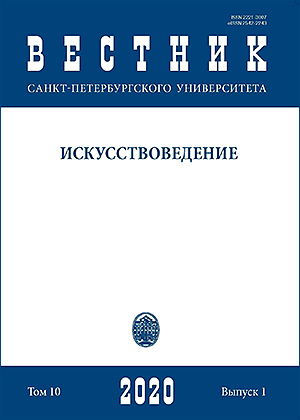Poetics of Japanese Calligraphy of Kana
DOI:
https://doi.org/10.21638/spbu15.2020.105Abstract
There has been little research concerning Japanese calligraphy in Western art history. Even in Japan the calligraphy of syllabic scripts kana has been actively studied only during the last ten years. The complexity of the study lies in the fact that the works of kana calligraphy are usually written in old Japanese, combined with cursive Chinese characters (‘mixed writing’), which requires special training even from a Japanese researcher. Since the calligraphy of kana is tightly connected with the poetry of waka and haiku, within this paper we analyze it in its relation to the history of traditional Japanese poetry. The objective of this study is to define the specific nature of kana calligraphy, which reflects a special ‘poetic sentiment’ inherited from waka and haiku. In this research we compare kana with Chinese calligraphy characters and discover that kana calligraphy is fluid in principal, matching the aesthetics of waka, which has a flowing of meanings, as a rule. We also analyze the later influence of haiku on kana calligraphy and conclude that haiku partly reverts the latter to kana Chinese calligraphy characters (where scripts can be written separately). In this paper we analyze the works of the most famous Japanese calligraphers who specialized in kana: Ono-no Michikaze (802–853), Fujiwara-no Yukinari (966–1028), Goho Hibino (1901–1985). We conclude that a distinctive feature of kana calligraphy in waka is sensual beauty while calligraphy in haiku is more restrained and simple. The results of the research are considered to be important not only as a theoretical basis for further investigations of kana, but they also present the grounds for a general reconsidering of the European art of writing as well.
Keywords:
Japanese calligraphy, Japanese poetry, poetic sentiment, calligraphy of kana, waka, tanka, haiku
Downloads
References
References
Downloads
Published
How to Cite
Issue
Section
License
Articles of "Vestnik of Saint Petersburg University. Arts" are open access distributed under the terms of the License Agreement with Saint Petersburg State University, which permits to the authors unrestricted distribution and self-archiving free of charge.






